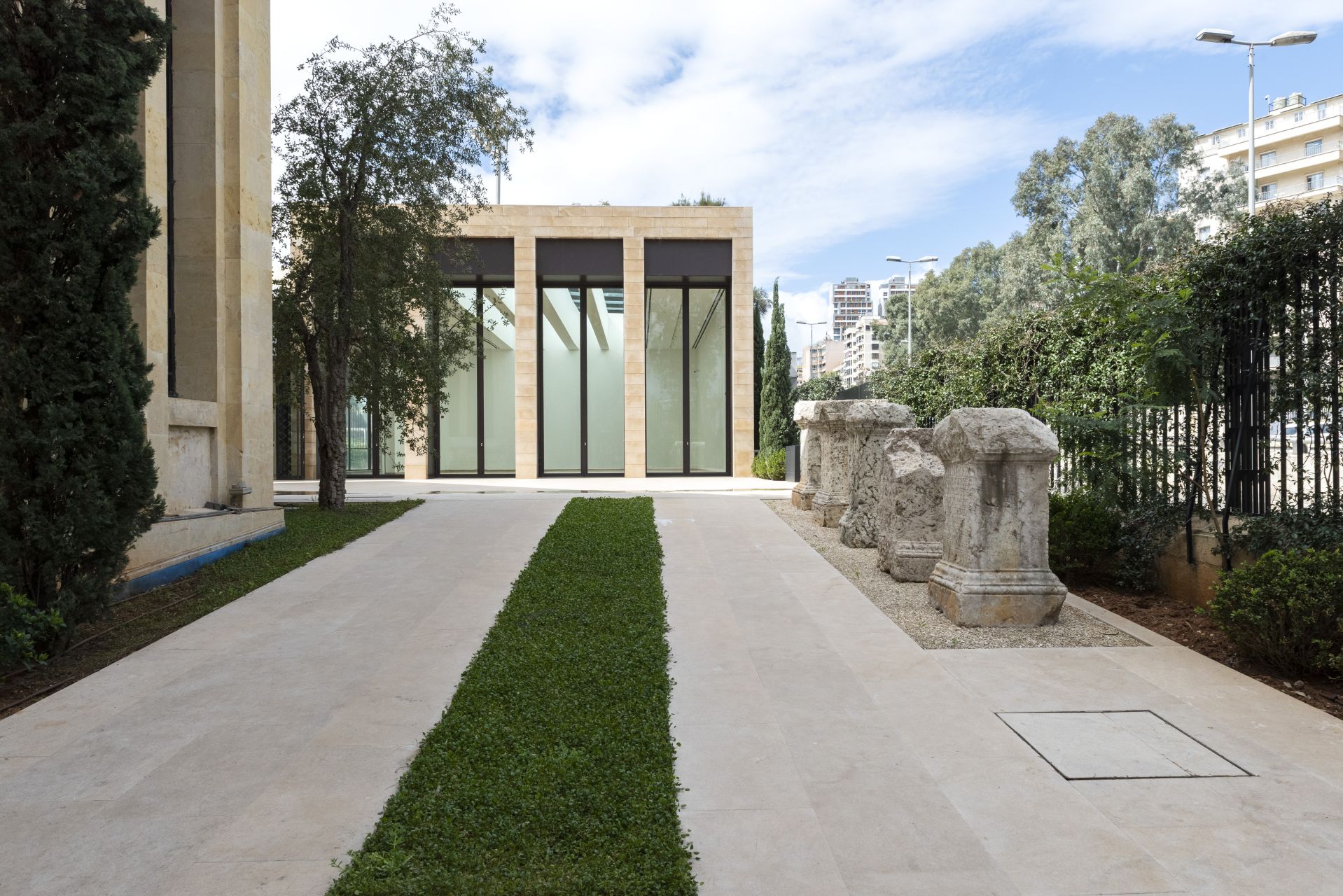
The Nuhad Es-Said Pavilion for Culture has opened its doors next to the National Museum of Beirut, offering a new space dedicated to art and heritage. Its inaugural exhibition, Doors and Passages, conceived and organized by the Beirut Museum of Art (BeMA), invites visitors to explore a panorama of modern and contemporary Lebanese art.
In these dark times, when Lebanon’s heritage is brought to its knees, when the ancient jewels of our culture teeter under bombardment, our hearts ache for Baalbeck, Tyre, and many other mythical places already wounded, whose future hangs by a thread. When the iconic Palmyra Hotel in Baalbeck, witness to so many eras, lies injured by bombs, a part of our soul and memory shatters in the noise of war.
But amid this chaos, a glimmer of hope has appeared. A space dedicated to art and beauty has chosen to open its doors wide, as a defiant stand against the madness of war, an act of faith in the power of creation. The Nuhad Es-Said Pavilion for Culture has made the bold decision to celebrate life and light, even as the country sinks into darkness.
Despite the war—or perhaps because of it—the pavilion has chosen life and creativity. By opening its doors to the public during an especially difficult time, it powerfully asserts the resilience of art and the human spirit in the face of darkness.
A Visionary Project in Service of Lebanese Heritage
The Nuhad Es-Said Pavilion for Culture, born from a collaboration between the National Heritage Foundation, led by Mrs. Mouna Haraoui, and the Es-Said family, its main benefactor, marks a new chapter in the foundation’s commitment to the National Museum of Beirut. The museum, a true treasure chest of heritage, houses invaluable archaeological relics, witnesses to centuries of history, while bearing the indelible scars of the Lebanese Civil War. During that conflict, Maurice Chehab, the museum’s first curator and Director General of Antiquities, dedicated himself to protecting Lebanon’s cultural heritage from destruction.
Designed by Raëd Abillama Architects, in keeping with original archives and materials, the pavilion offers a versatile space in harmony with the main museum building. Its mission: to celebrate and share Lebanon’s rich cultural legacy through innovative programs, captivating exhibitions, and strong community engagement. The pavilion aims to be a cutting-edge platform, a pillar of national identity, a source of curiosity, and a catalyst for creativity, while also providing financial support to the National Museum of Beirut through cultural and social events, as well as the Pavilion Café, led by Chef Hussein Hadid.
A Contemporary Jewel in Dialogue with the Past
Like a modern mirror of the National Museum of Beirut, a beacon of national heritage, the Nuhad Es-Said Pavilion for Culture stands proudly beside it. Far from overshadowing its majestic neighbor, it enhances it, breathing new life into it while highlighting its timeless grandeur. Inspired by the original 1928 plans, which envisioned two wings—of which only the left was completed—architect Raëd Abillama designed the right wing to naturally complement the original building, while asserting a distinctly contemporary identity. Clean and bright spaces, perfect for art exhibitions and events, coexist with the Pavilion Café, an oasis of peace, culture, and greenery. This place invites visitors on a sensory journey, a magical escape in troubled times. Multipurpose spaces for conferences, workshops, and performances complete this vibrant and luminous pavilion, designed to bring new life to a resilient national monument that has endured wars, destruction, and crises. A new chapter thus begins in the museum’s history, reflecting that of Beirut and Lebanon, rich in seven decades of events.
Doors and Passages: A Poetic Journey Through Lebanese Art
The inaugural exhibition Doors and Passages, a journey between reality and imagination, unfolds throughout the pavilion’s spaces. Conceived and organized by BeMA, co-directed by Juliana Khalaf and Taline Boladian, and under the artistic direction of Clémence Cottard Hachem, this exhibition brings together 33 works—paintings, sculptures, installations, photographs, and videos—around four themes: memory, myths, perception, and territory. The exhibition opens with an immersive installation specially created by artist Alfred Tarazi, a true “hymn to love,” exploring notions of memory, reality, and fiction.
The journey continues through four sections, featuring works from the national collection of the Ministry of Culture entrusted to BeMA, as well as private collections.
Alongside these masterpieces, works by modern and contemporary artists engage in dialogue, some of which are being displayed for the first time, from both public and private collections. In the various rooms, prominent names in Lebanese art like Saliba Douaihy, Shafic Abboud, Saloua Raouda Choucair, and Aref El Rayess are displayed side by side.
The exhibition aims to offer a sensitive and poetic “journey,” where the artworks resonate with each other through formal and thematic echoes, inviting reflection on time, memory, founding myths, and real and imaginary spaces. This approach highlights the permanence and universality of certain sources of artistic inspiration, while showcasing the vitality of the Lebanese art scene in its diverse expressions.
Through a carefully designed scenography, combining intimate spaces with panoramic views, the exhibition highlights the artworks with visual correspondences, creating a true celebration of Lebanese art and artists.
By opening the “doors” to this creative universe and inviting us to traverse its symbolic “passages,” the Nuhad Es-Said Pavilion for Culture and BeMA offer both Lebanese and international visitors a breath of beauty and a source of inspiration. A promise for the future, against all odds.
So, at a time when the din of war threatens to silence the voice of beauty, let us rush to the Nuhad Es-Said Pavilion for Culture. This place embodies resilience and offers us a haven of light amid the darkness. May these wide-open doors to art and emotion be our cry, our revolt, our invincible hope, for the fight for culture has never been more meaningful.




Comments